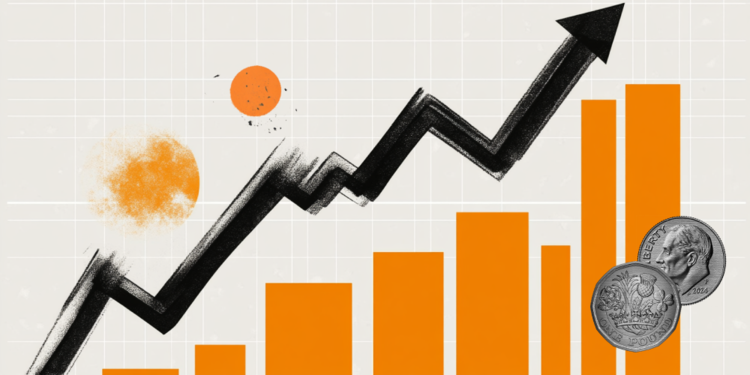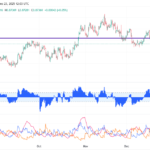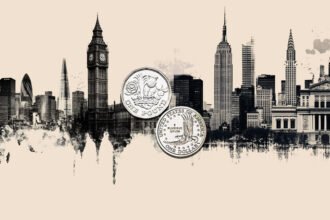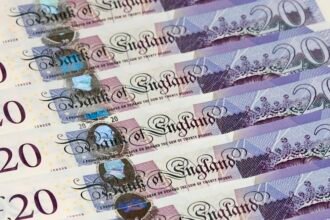- GBP/USD recovers above 1.2600 following Wednesday’s choppy action.
- The pair needs to clear 1.2650 resistance to extend its uptrend.
- Retreating US Treasury bond yields weigh on the USD on Thursday.
GBP/USD holds its ground and trades slightly above 1.2600 in the European session on Thursday after posting marginal losses on Wednesday. The pair’s technical outlook points to a lack of seller interest in the near term.
British Pound PRICE This week
The table below shows the percentage change of British Pound (GBP) against listed major currencies this week. British Pound was the strongest against the Euro.
| USD | EUR | GBP | JPY | CAD | AUD | NZD | CHF | |
|---|---|---|---|---|---|---|---|---|
| USD | 0.55% | -0.19% | -1.26% | 0.25% | -0.38% | -0.15% | 0.28% | |
| EUR | -0.55% | -0.58% | -1.85% | -0.20% | -0.83% | -0.59% | -0.17% | |
| GBP | 0.19% | 0.58% | -1.18% | 0.38% | -0.20% | -0.01% | 0.41% | |
| JPY | 1.26% | 1.85% | 1.18% | 1.52% | 0.93% | 1.34% | 1.52% | |
| CAD | -0.25% | 0.20% | -0.38% | -1.52% | -0.59% | -0.39% | 0.02% | |
| AUD | 0.38% | 0.83% | 0.20% | -0.93% | 0.59% | 0.24% | 0.68% | |
| NZD | 0.15% | 0.59% | 0.01% | -1.34% | 0.39% | -0.24% | 0.43% | |
| CHF | -0.28% | 0.17% | -0.41% | -1.52% | -0.02% | -0.68% | -0.43% |
The heat map shows percentage changes of major currencies against each other. The base currency is picked from the left column, while the quote currency is picked from the top row. For example, if you pick the British Pound from the left column and move along the horizontal line to the US Dollar, the percentage change displayed in the box will represent GBP (base)/USD (quote).
Early Wednesday, GBP/USD edged higher with the immediate reaction to the January inflation data from the UK. Later in the day, the US Dollar (USD) benefited from the cautious market mood and caused the pair to turn south. Meanwhile, the minutes of the Federal Reserve’s (Fed) January policy meeting showed that some policymakers saw potential changes in trade and immigration policy possibly hindering the disinflation process.
In the European session on Thursday, the benchmark 10-year US Treasury bond yield retreats toward 4.5%, making it difficult for the USD to find demand and helping GBP/USD keep its footing.
The US economic calendar will feature the weekly Initial Jobless Claims data on Thursday. Investors expect the number of first-time applications for unemployment benefits to rise slightly to 215,000 in the week ending February 15. A reading below 200,000 could boost the USD with the immediate reaction and cap GBP/USD’s upside. On the flip side, a bigger-than-forecast increase in this data could allow the pair to stretch higher.
In the early trading hours of the European session on Friday, the UK’s Office for National Statistics will publish Retail Sales data for January.
GBP/USD Technical Analysis
The Relative Strength Index (RSI) indicator on the 4-hour chart rises toward 60 after dropping to the 50 region on Wednesday, suggesting that technical buyers remain interested. On the upside, 1.2650 (Fibonacci 78.6% retracement of the latest uptrend) aligns as a key resistance level before 1.2700-1.2710 (round level, static level) and 1.2750 (static level).
Looking south, the first support level could be spotted at 1.2580 (static level) ahead of 1.2530 (Fibonacci 61.8% retracement) and 1.2500 (round level, static level).
Pound Sterling FAQs
The Pound Sterling (GBP) is the oldest currency in the world (886 AD) and the official currency of the United Kingdom. It is the fourth most traded unit for foreign exchange (FX) in the world, accounting for 12% of all transactions, averaging $630 billion a day, according to 2022 data. Its key trading pairs are GBP/USD, also known as ‘Cable’, which accounts for 11% of FX, GBP/JPY, or the ‘Dragon’ as it is known by traders (3%), and EUR/GBP (2%). The Pound Sterling is issued by the Bank of England (BoE).
The single most important factor influencing the value of the Pound Sterling is monetary policy decided by the Bank of England. The BoE bases its decisions on whether it has achieved its primary goal of “price stability” – a steady inflation rate of around 2%. Its primary tool for achieving this is the adjustment of interest rates. When inflation is too high, the BoE will try to rein it in by raising interest rates, making it more expensive for people and businesses to access credit. This is generally positive for GBP, as higher interest rates make the UK a more attractive place for global investors to park their money. When inflation falls too low it is a sign economic growth is slowing. In this scenario, the BoE will consider lowering interest rates to cheapen credit so businesses will borrow more to invest in growth-generating projects.
Data releases gauge the health of the economy and can impact the value of the Pound Sterling. Indicators such as GDP, Manufacturing and Services PMIs, and employment can all influence the direction of the GBP. A strong economy is good for Sterling. Not only does it attract more foreign investment but it may encourage the BoE to put up interest rates, which will directly strengthen GBP. Otherwise, if economic data is weak, the Pound Sterling is likely to fall.
Another significant data release for the Pound Sterling is the Trade Balance. This indicator measures the difference between what a country earns from its exports and what it spends on imports over a given period. If a country produces highly sought-after exports, its currency will benefit purely from the extra demand created from foreign buyers seeking to purchase these goods. Therefore, a positive net Trade Balance strengthens a currency and vice versa for a negative balance.





















